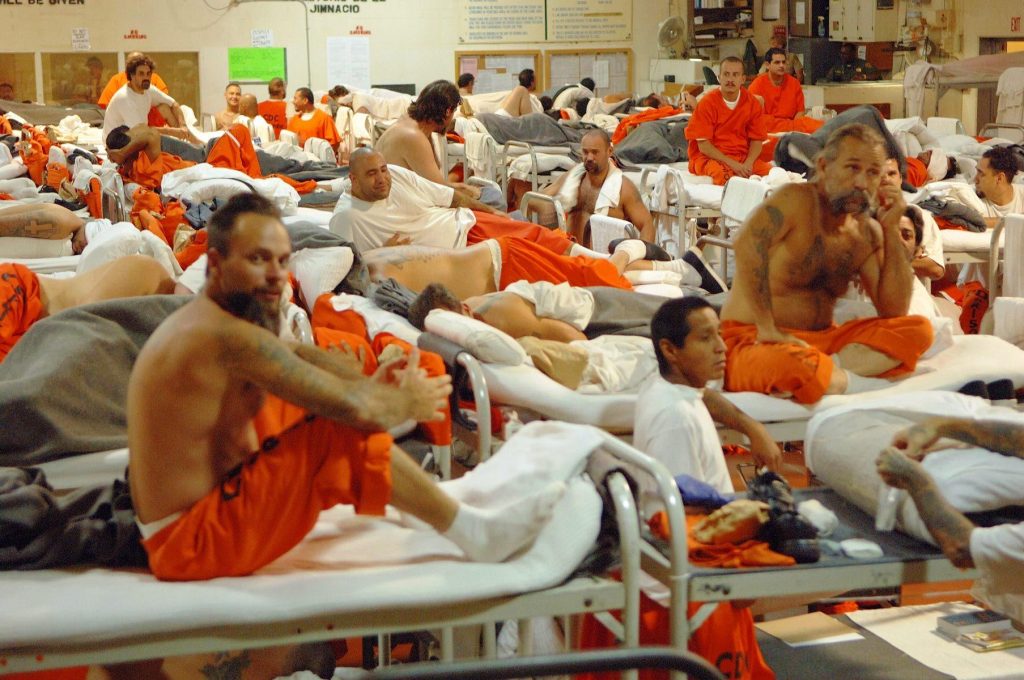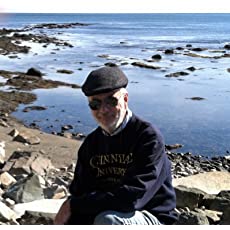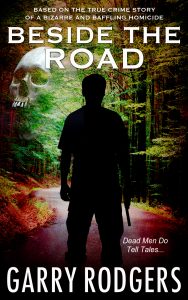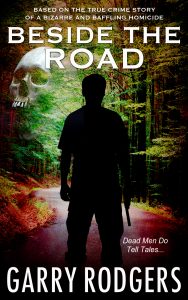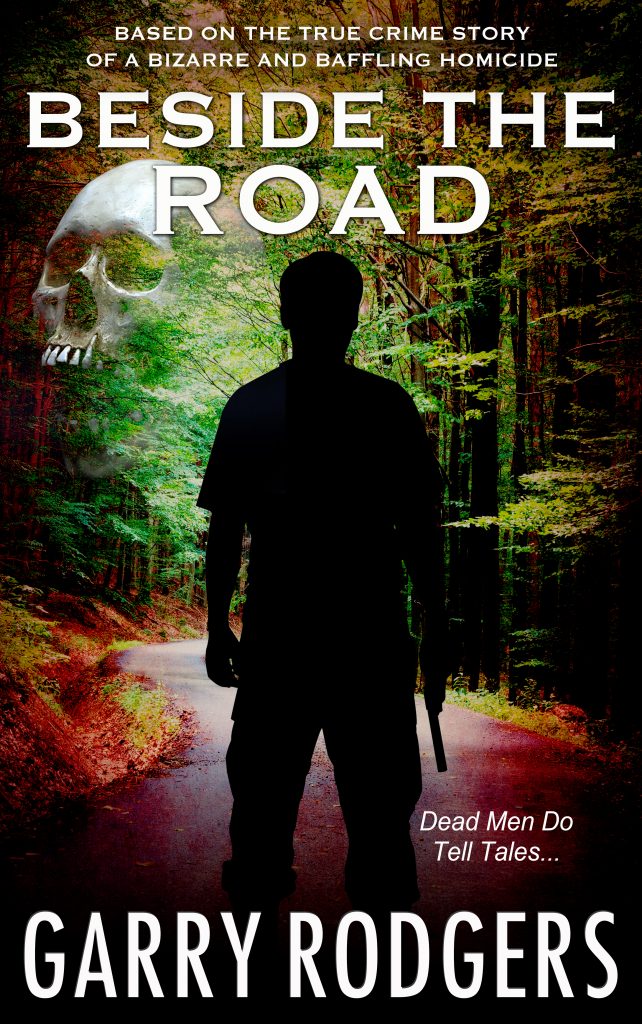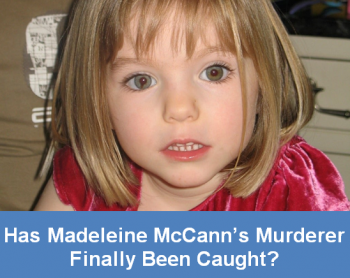 On May 3rd, 2007 three-year-old Madeleine (Maddy) McCann disappeared from her family’s holiday apartment in Portugal. Her body has never been found, and all information suggests the British toddler was abducted and murdered. The McCann missing persons case became one of the highest-profile criminal investigations of all time. Now, German police have a man in custody who they believe is the killer. In fact, they say they have irrefutable evidence.
On May 3rd, 2007 three-year-old Madeleine (Maddy) McCann disappeared from her family’s holiday apartment in Portugal. Her body has never been found, and all information suggests the British toddler was abducted and murdered. The McCann missing persons case became one of the highest-profile criminal investigations of all time. Now, German police have a man in custody who they believe is the killer. In fact, they say they have irrefutable evidence.
The suspect has not yet been charged with Maddy McCann’s murder. That requires evidence that’s admissible under Portuguese Law—Portugal being the country where the crime took place and the authority having jurisdiction to prosecute the case. Before looking at who the suspect is and what evidence connects him to the crime, let’s review the facts of this tragic case.
Madeleine’s parents, Kate and Gerry McCann, took their three children on a week-long vacation to a holiday resort at Praia da Luz in the Algarve recreational region of southern Portugal. Here, they rented a two-bedroom villa or apartment which had a ground floor, courtyard entrance. With Maddy and her parents were the other McCann children, a pair of two-year-old twins. The McCann family was also with a group of friends from the UK. In total, there were seven adults and eight children.
During the week, the adults of the group would have late-evening dinners after the small children were put to bed. They took turns of periodic checks on the sleeping kids until they returned from the courtyard’s outdoor tapas dining area which was 160 feet or 55 meters from the McCann apartment. For the first few nights, everything was fine and there was no reason for anyone to be concerned about the children’s safety.
At 10:00 pm, Kate McCann took her turn to check on the children. She discovered the courtyard door was open when it should have been shut. Kate went inside and into the bedroom where Maddy and the twins slept. The twins were fine, but Maddy was gone.
 Kate McCann frantically searched the small apartment that consisted of a combined living/dining/kitchen area and a separate bedroom that the adults used. Maddy was nowhere to be found. Kate rushed to the door and screamed across the courtyard that her little girl was missing.
Kate McCann frantically searched the small apartment that consisted of a combined living/dining/kitchen area and a separate bedroom that the adults used. Maddy was nowhere to be found. Kate rushed to the door and screamed across the courtyard that her little girl was missing.
The group of friends began searching the immediate area and other apartments. The resort staff, including their security detail, combed the complex. Not a trace of Madeleine McCann showed up. It was after 11:00 pm when they notified the local police.
The local officers searched throughout the night. At 2:00 am, they brought in two patrol dogs and by 8:00 am four more search and rescue dogs arrived. The search expanded outside of the resort complex to take in local streets, alleys, buildings, and the beach along the waterfront. Absolutely no trace of Madeleine McCann was found.
Hindsight being what it is, the local police did not treat the McCann’s apartment as a crime scene. That occurred the next day when a higher authority from Portimao took over the investigation. The “golden hours” immediately following the abduction were lost. It was nearly a day later when Maddy’s description was broadcast, roadblocks established, and a proper scene examination was done.
Two witnesses surfaced who reported seeing a man carrying a little girl near the complex around 10:00 pm on May 3rd. This has been widely reported over the years and both sightings (known as the Tanner and Smith sightings) seem conclusively ruled out or eliminated. However, they did create an avenue of focus by the Portuguese police that became narrow-minded and off-track.
The Madeleine McCann case became an instant media frenzy. It’s best described as a circus and it occurred just when social media platforms took off. The British Tabloids fueled the flames of speculation which were carried around the world by emerging SM sites like MSN and a thing called Facebook.
It wasn’t long before the McCann parents became prime suspects. There wasn’t a lick of evidence to support that suspicion and no logical reason why they would harm their daughter. Although it was absurd, the Portuguese police applied arguido status to Kate and Gerry McCann and implicated that they had done something to harm Maddy by accident and were conspiring to cover it up.
 This baseless accusation escalated quickly. The renowned British agency, Scotland Yard, commenced their investigation into Madeleine McCann’s disappearance. Their common-sense approach relieved the heat on the McCann family and influenced the authorities in Portugal to drop the arguido rule.
This baseless accusation escalated quickly. The renowned British agency, Scotland Yard, commenced their investigation into Madeleine McCann’s disappearance. Their common-sense approach relieved the heat on the McCann family and influenced the authorities in Portugal to drop the arguido rule.
However, the damage was done. The family’s reputation suffered immensely, especially after the lead investigator on the Portuguese side published a book accusing Maddy’s parents of this heinous crime. That ended in a lengthy lawsuit and served no purpose in finding out what really happened to Madeleine McCann.
* * *
In June 2020, the public prosecutor in Braunschweig, Germany ordered an inquiry into the McCann abduction and murder. The prosecutor said what all credible people involved in the investigation believed—Maddy was dead and had been killed shortly after she was snatched by a pedophile sex offender. The German authorities had someone in mind, and that someone was already in their custody.
 The current and prime suspect for murdering Madeleine McCann is 43-year-old Christian Brückner. He is serving a seven-year sentence for rape at a German prison and has been previously convicted of sex crimes on children. It seems, however, that Christian Brückner has been on the police radar for Maddy’s murder for the past seven years.
The current and prime suspect for murdering Madeleine McCann is 43-year-old Christian Brückner. He is serving a seven-year sentence for rape at a German prison and has been previously convicted of sex crimes on children. It seems, however, that Christian Brückner has been on the police radar for Maddy’s murder for the past seven years.
The German authorities state Brückner was near the crime scene on the night Madeleine McCann vanished. He was living in a Volkswagen van on the beach below the resort and was well-known to certain resort staff. Allegedly, Christian Brückner left the area when the search started and sold his passenger vehicle, a Jaguar, to another party who re-registered it the following day.
It seems the police theory is that Brückner was somehow assisted by a resort staff member. It’s not clear from released information if that was to help him burglarize the apartment(s) or specifically for a sexually-deviant purpose. At the heart of this is a phone record connection between Christian Brückner and the unnamed staff member that took place shortly before Maddy’s abduction.
Has Madeleine McCann’s murderer finally been caught? He may have been caught and in jail on other matters, but he hasn’t been charged or convicted of this offense yet. Although the German police publicly claim they have “irrefutable” evidence, they haven’t disclosed what it is. That, possibly, is because it’s not legally admissible evidence.
Experienced homicide investigators know that solving a murder depends on four factors:
1. There is physical evidence left at the crime scene that links the perpetrator.
2. The perpetrator took something from the scene that links them to the crime.
3. Someone saw the perpetrator at or near the scene when the crime occurred.
4. The perpetrator admits to committing the crime by confessing or otherwise.
In the Madeleine McCann case, there doesn’t appear to be any physical or forensic evidence in the apartment or anywhere in the vicinity that identifies who abducted this innocent little girl. There may have been some trace evidence like fingerprints, footwear impressions, or DNA material deposited but it’s too late for that. That investigation avenue is closed.
 The perpetrator certainly did take something from the scene. That was Maddy. However, her body has never been discovered, and where she is only the killer likely knows. So far, he hasn’t said anything or her remains would have been located.
The perpetrator certainly did take something from the scene. That was Maddy. However, her body has never been discovered, and where she is only the killer likely knows. So far, he hasn’t said anything or her remains would have been located.
There are no known eyewitnesses to seeing Maddy being snatched. The two famous sightings are not credible evidence. In fact, neither witness ever said they could identify the man they say was carrying a little girl.
If Christian Brückner is Maddy’s murderer, will he confess? That’s anyone’s guess, and it’s certain that skilled interrogators have taken a run at him. Time might tell.
But, there’s two possibilities that might break the case open. That’s if Christian Brückner was working with an accomplice—then that person may agree to cooperate and testify as to the truth about what really happened. Or, if the “irrefutable” evidence leads them to what’s left of Maddy’s remains.
If so, maybe Madeleine McCann’s murderer has finally been caught.





